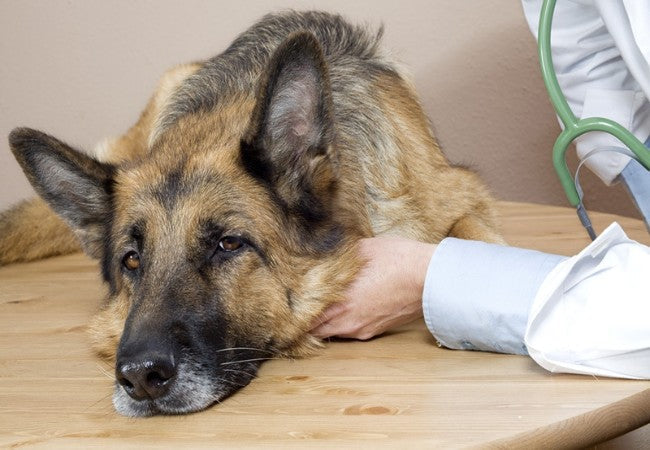Neurological Disorders in Dogs – Vet Guide 2025 🐶🧠🩺

In this article
Neurological Disorders in Dogs – Vet Guide 2025 🐶🧠
By Dr. Duncan Houston BVSc
Hello, I’m Dr Duncan Houston, BVSc, founder of Ask A Vet. The nervous system controls movement, balance, sensation, and behaviour—so even small issues can significantly impact your dog. This comprehensive 2025 guide will help you recognize warning signs, understand how a neurologic exam is performed, learn about common neurological disorders, get clarity on diagnostics, and explore treatment and home‐care strategies. Let’s empower you with knowledge to support your companion’s neuro health journey. 💙
📌 Common Neurologic Signs to Watch For
Neurological conditions can present subtly or acutely. Some common signs include:
- Ataxia (uncoordinated gait), stumbling, circling, knuckling paws
- Head tilt, rapid eye movements (nystagmus), abnormal postures
- Seizures, tremors, behavioural changes or disorientation
- Weakness, paralysis, proprioceptive deficits, slipping
- Blindness, circling, head pressing, altered mental status
🧭 Neurological Exam: Pinpointing the Problem
A systematic neurologic exam helps answer:
- Is there a neurological disease?
- Where is the lesion (brain, cerebellum, brainstem, spine, nerve)?
- How severe is it?
- Is it static, worsening, or improving?
Exam includes:
- Initial observations—mentation, posture, gait, cranial nerve tests
- Postural reactions—hopping, proprioception, hemiwalking
- Reflex testing—spinal and cranial (menace, pupillary responses)
- Pain evaluation—spinal palpation and nociception
Description of each step and interpretation is critical to guiding diagnostics and treatment plans.
🧠 Localization of Neurologic Lesions
Based on exam findings, neurologists localize the issue to:
- Forebrain: seizures, behavior changes, circling in one direction
- Cerebellum: ataxia, intention tremors, wide-based gait
- Brainstem: cranial nerve deficits, vestibular signs, respiratory issues
- Spinal cord: paresis or paralysis, reflex changes with limb involvement
- Peripheral nerves/muscle: weakness, muscle atrophy, decreased sensation
📋 Common Neurologic Disorders in Dogs
Neurologic conditions span inflammatory, degenerative, genetic, structural, neoplastic, infectious, toxic, and vascular categories :
🦴 Intervertebral Disc Disease (IVDD)
Disc herniation compresses the spinal cord—leading to back pain, ataxia, or paralysis depending on severity.
🐾 Degenerative Myelopathy (DM)
An ALS-like disease common in older GSDs, corgis, causes progressive UMN hindlimb weakness. No cure but rehab can help.
🧬 Inherited Conditions: NAD, CA, Polyneuropathy, Scotty Cramp & More
- Neuroaxonal dystrophy—progressive axon damage in young to adult dogs
- Cerebellar abiotrophy—Purkinje cell loss causing ataxia in puppies
- Polyneuropathy—genetic peripheral nerve disease (Rottweilers, Dobermans)
- Scotty cramp—exercise-induced spasms in Scottish Terriers
🧠 Seizure Disorders & Epilepsy
Epileptic seizures are common neurologic emergencies. Diagnosis involves history, bloodwork, and imaging.
🧪 Brain & Spinal Tumors, Stroke & Vascular Events
Masses, infarcts, brain bleeds, and IVDD-like spinal issues can mimic other neurologic diseases.
😷 Infection & Inflammatory Conditions
Encephalitis, meningitis, tick paralysis, distemper, and more cause diverse signs from tremors to paralysis.
☠️ Toxin & Trauma-Induced Neuropathy
Toxins (e.g. antifreeze, lead) and trauma impact brain and nerve function, causing seizures or paralysis.
🔍 Diagnostic Process
- Complete history & focused neurologic exam, including bloodwork for toxicoses and metabolic disorders
- Cerebrospinal fluid analysis—detects inflammation or infection
- Imaging: MRI for brain/spine, CT for bone assessment, X-rays for IVDD or tumors
- Electrodiagnostics: EMG & nerve conduction for neuromuscular disease
- Biopsy or PCR testing for tumors, inflammation, or infectious etiologies
Accurate localization helps minimize unnecessary testing and informs best outcomes.
💊 Treatments & Rehabilitation
Approaches vary based on the cause:
- Surgery: IVDD decompression, tumor removal
- Medical management: steroids, antimicrobials, anticonvulsants, immunosuppressants
- Rehabilitation: physiotherapy, hydrotherapy, acupuncture, laser
- Supportive care: pain relief, mobility aids, home adaptations, cognitive enrichment
- Long-term monitoring: regular rechecks, imaging for degenerative or neoplastic conditions
🏡 Home Care & Quality-of-Life Enhancement
- Non-slip flooring and ramps for safe movement
- Assistive tools—harnesses, slings, carts—in progressive conditions
- Maintain strength with short, controlled exercise sessions
- Monitor bladder/bowel and address incontinence promptly
- Ensure pain is managed; watch for behaviour changes
- Stay connected with your vet or Ask A Vet for evolving care needs
✨ Key Takeaways
- Neurological disorders can affect any part of the nervous system—early recognition is essential.
- A detailed neurological exam allows lesion localization and guides diagnostics.
- Treatment depends on the root cause, and often includes surgery, drugs, rehab, and home adjustments.
- Conditions range from acute emergencies like seizures, trauma, and IVDD to chronic degenerative or genetic diseases.
- With a multimodal, personalized plan, most dogs maintain comfort and meaningful quality of life.
- Continual collaboration with your veterinarian or Ask A Vet ensures the best outcomes—your dog deserves nothing less. 🐾❤️
If you notice abnormal gait, seizures, paralysis, behavior changes or head tilt—don’t delay. Book a neuro exam with your veterinarian or reach out to Ask A Vet. Early, expert assessment makes all the difference. 🩺






